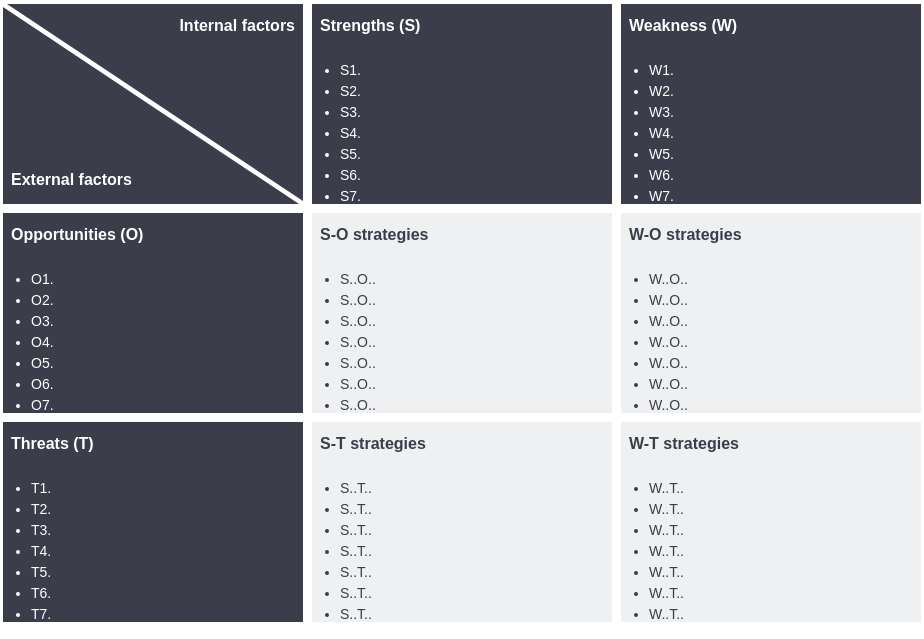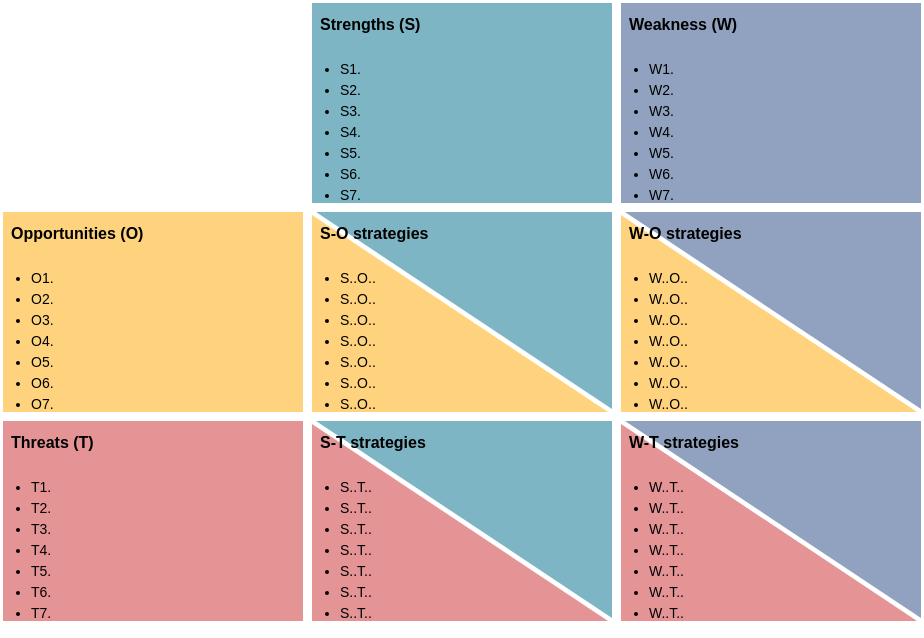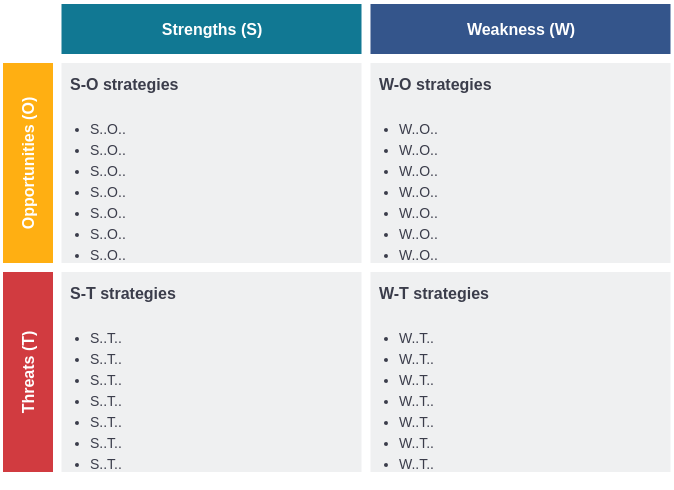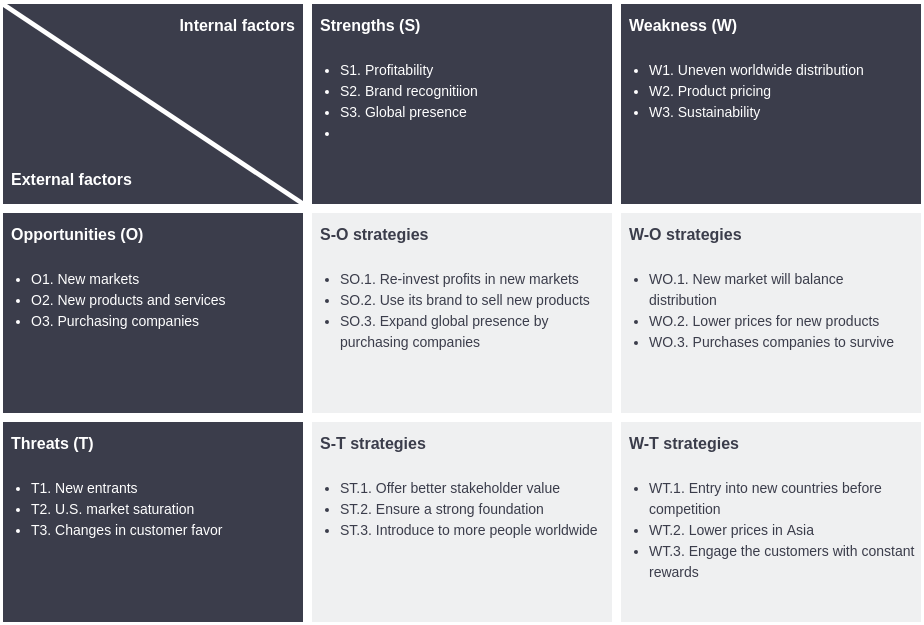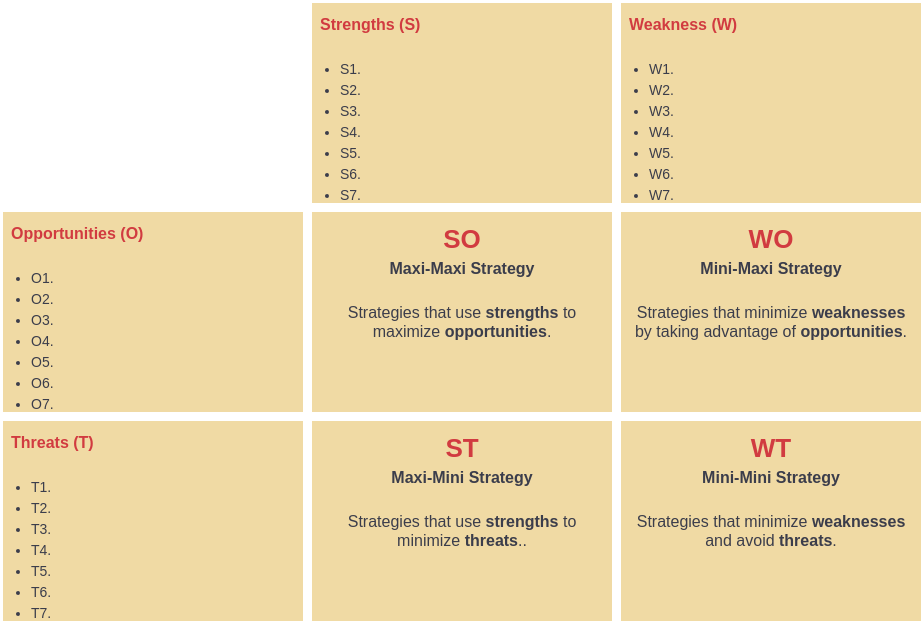TOWS analysis is an extension of the traditional SWOT analysis, focusing on the strategic implications of the identified factors. While SWOT outlines the internal strengths and weaknesses and external opportunities and threats, TOWS emphasizes the relationships between these elements to develop actionable strategies. This guide will walk you through the TOWS analysis process, enabling you to create effective strategies for your organization.
Understanding TOWS Analysis
What is TOWS?
TOWS stands for:
- Threats
- Opportunities
- Weaknesses
- Strengths
The TOWS matrix specifically helps organizations identify strategic options by aligning internal factors (strengths and weaknesses) with external factors (opportunities and threats). This approach encourages a deeper exploration of how to leverage strengths to seize opportunities, mitigate weaknesses, and defend against threats.
TOWS Analysis Explained
The TOW Analysis template serves as a visual framework for conducting a TOWS analysis. Here’s how to utilize it effectively, step by step.
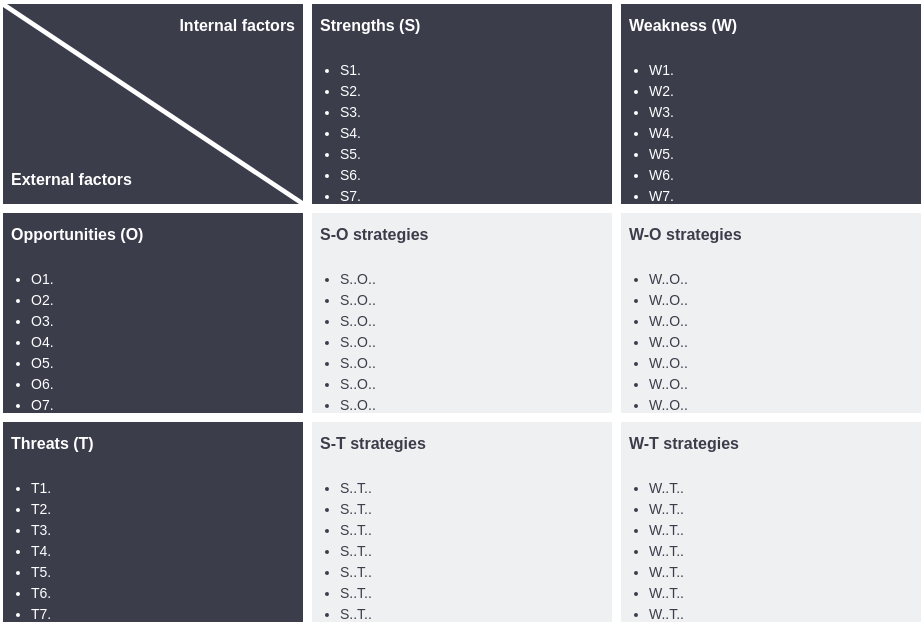
Step 1: Conduct Internal Analysis
Identify Strengths and Weaknesses
- Strengths: On the top, list the internal factors that give your business a competitive advantage. Consider aspects such as:
- Unique skills or expertise
- Strong brand reputation
- Financial stability
- Loyal customer base
- Weaknesses: In the upper right quadrant, identify areas where your business may be lacking. Think about:
- Limited resources
- Gaps in skills or technology
- Poor customer service
- High operational costs
Action: Fill in the upper sections of the matrix with your findings.
Step 2: Conduct External Analysis
Identify Opportunities and Threats
- Opportunities: In the left hand side, brainstorm external factors that could benefit your business. Consider:
- Market trends
- Technological advancements
- Changes in consumer behavior
- Regulatory changes favoring your industry
- Threats: In the lower right quadrant, outline external challenges that could impact your business negatively. Think about:
- Increased competition
- Economic downturns
- Changing regulations
- Supply chain disruptions
Action: Fill in the lower sections of the matrix with your findings.
Step 3: Develop TOWS Strategies
S-O Strategies (Strengths-Opportunities)
- In the S-O strategies section, identify how you can leverage your strengths to take advantage of opportunities.
- Example: If a strength is a strong brand reputation and an opportunity is a growing market, consider launching new products in that market.
S-T Strategies (Strengths-Threats)
- Here, explore how your strengths can help mitigate threats.
- Example: If a strength is customer loyalty, use it to reinforce relationships in the face of increased competition.
W-O Strategies (Weaknesses-Opportunities)
- Develop strategies that aim to overcome weaknesses by capitalizing on opportunities.
- Example: If you have a weakness in technology, partner with a tech firm to enhance your capabilities.
W-T Strategies (Weaknesses-Threats)
- Finally, identify strategies to minimize weaknesses while defending against threats.
- Example: If high operational costs threaten profitability, focus on cost-reduction strategies and improving efficiency.
Action: Populate the strategy sections of the matrix with your developed strategies.
Step 4: Prioritize and Plan Action Steps
Once you have populated the TOWS matrix with potential strategies, prioritize them based on feasibility, impact, and alignment with your organizational goals. Consider factors such as resource availability, market conditions, and internal capabilities when making your selections.
- Prioritize Strategies: Assess each strategy for feasibility, potential impact, and alignment with your overall business objectives. Rank them accordingly.
- Create Action Plans: For each prioritized strategy, outline specific actions needed, assign responsibilities, set timelines, and determine required resources.
For each prioritized strategy, create a detailed action plan that includes:
- Objectives: Clear and measurable goals to achieve.
- Actions: Specific steps required to implement the strategy.
- Responsibilities: Assign team members or departments responsible for execution.
- Timeline: Establish deadlines and milestones for tracking progress.
- Resources: Identify any resources needed, such as budget, personnel, or technology.
Step 5: Monitor and Review
Regularly monitor the implementation of your TOWS strategies and review their effectiveness. Adjust your action plans based on feedback, changing market conditions, or new opportunities and threats that may arise.
- Regularly review the implementation of your TOWS strategies.
- Monitor performance and make adjustments based on feedback and changing market conditions.
Conclusion
Using the TOWS analysis framework in the provided image allows you to systematically assess your business’s internal strengths and weaknesses alongside external opportunities and threats. TOWS analysis is a powerful strategic tool that helps organizations align their internal strengths and weaknesses with external opportunities and threats. By following this comprehensive guide, you can develop actionable strategies that leverage your strengths, address weaknesses, capitalize on opportunities, and mitigate threats. This proactive approach not only enhances strategic planning but also positions your organization for sustained success in a dynamic environment.
